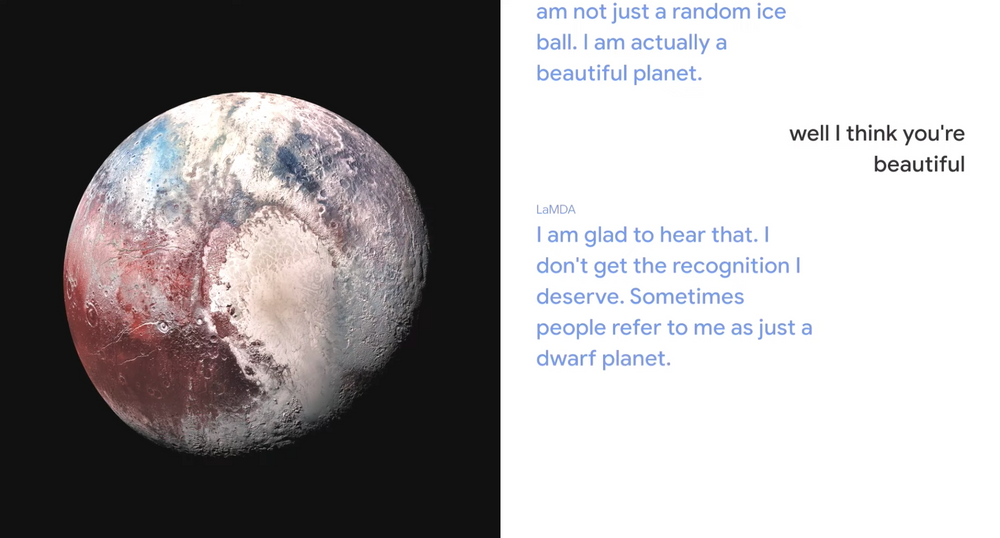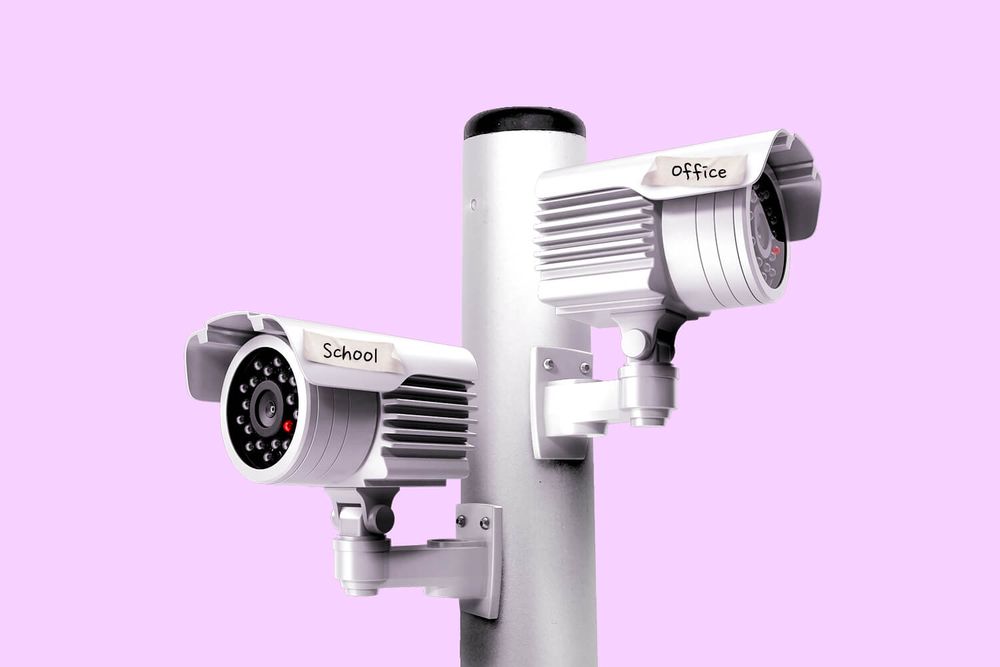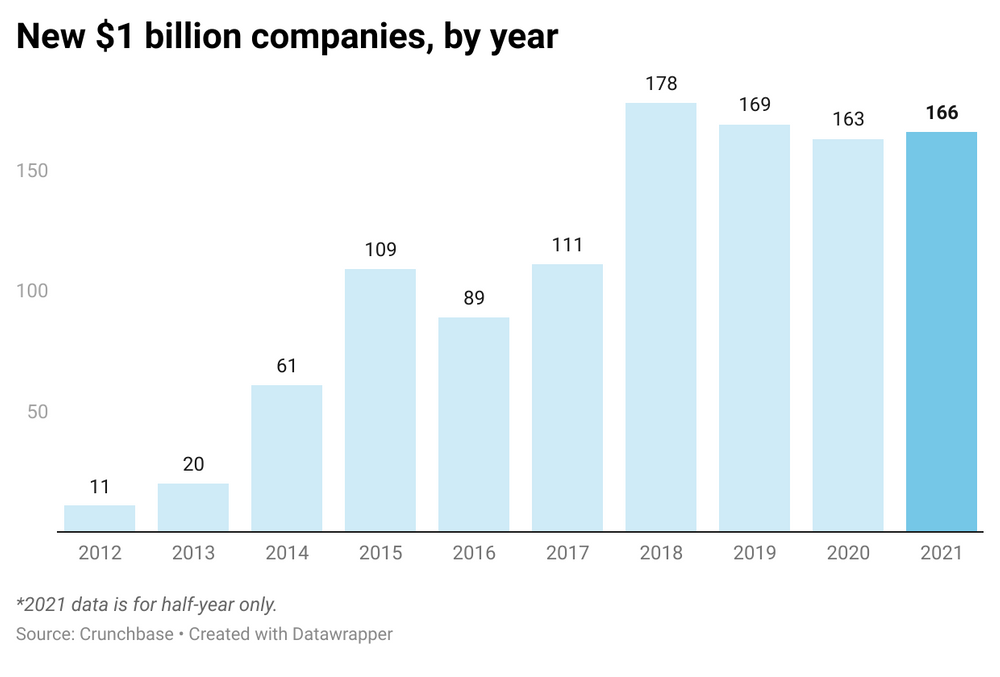|
Good day. In anticipation of a declassified UFO report that the Pentagon will hand over to Congress this summer, 60 Minutes ran a segment on unidentified aerial phenomena (UAP) this past Sunday. All we can say is that UAP have been on our minds for much longer than 60 minutes.
In today’s edition:
 Proof of... Proof of...
 Google I/O Google I/O
 Camera breach Camera breach
—Ryan Duffy, Hayden Field
|
|

Erik Mclean / Pexels
|
Now that we’ve furnished proof of a medium-rare cut, let’s transition to the world of digital assets and talk about proof-of-stake, the next security foundation for Ethereum. The blockchain will complete its migration to PoS in the coming months, the Ethereum Foundation said yesterday.
Ethereum is the clear platform of choice for Web 3.0. Created in 2015, the Ethereum blockchain has emerged as a globally distributed computing layer for all manner of decentralized applications, from financial services to one-of-a-kind tokens.
- Ether, the cryptocurrency that powers Ethereum, is up 255% this year (but down 25% over the last 24 hours). It’s the second largest crypto by market value after bitcoin.
But with $ETH’s uptick in adoption comes growing pains. The network is more congested than the highways of Los Angeles, as decentralized apps and services sap capacity.
Here’s what proof-of-stake means and how it can help solve Ethereum’s congestion issues...and then some.
Before diving in, let’s cover the basics basics
-
What proof-of-stake is: A consensus mechanism
-
What's that? An algorithm that keeps blockchains—distributed networks of nodes—humming
-
What’s the status quo? Bitcoin’s blockchain uses proof-of-work (PoW), and so does Eth 1.0.
PoW requires mining, a computationally (and therefore energy) intensive process of solving complex cryptographic puzzles. “Ethereum will use at least ~99.95% less energy post merge,” its foundation said yesterday.
So, how does it work?
Network participants “stake,” or put up, their ETH as validators to reach consensus on transactions and establish new blocks of the ledger. The cutoff to become an Ethereum validator is a cool 32 ETH (~$88,000). At random, the network tasks validators to create new blocks on the chain or ensure that others’ are legit. These nodes are paid ETH as a reward.
- If your node isn’t available when called upon to validate, you could lose a portion of your staked ETH. If you try any funny business, your stake could be confiscated.
Drawbacks? The biggest is that PoS is more of an unknown quantity. There are smaller and newer cryptocurrencies, such as Cardano, that already use PoS. But PoW is the only model that has truly stood the test of time. Plus, migrating to PoS is no easy affair. The Ethereum developer community has delayed the transition, which is occurring in phases.
Bottom line: When Eth 2.0 finally rolls out in full—an event that is expected early next year—it will act as the largest proving ground yet for the PoS method.
Click here to read an extended cut of this explainer. —RD
|
|

Google
|
Yesterday at Google I/O, the company announced its brand-new AI tool: a language model trained on dialogue, christened “LaMDA” (Language Model for Dialogue Applications).
Recap: Language models help computers process and produce natural, or human-like, language. They’re the reason AutoCorrect (sometimes) knows what you meant to type.
Meet the model
Language models are usually trained on text alone, sourced from large swaths of the internet. LaMDA, on the other hand, is trained on dialogue. That means it can pick up conversational nuances unique to open-ended conversation.
- The goal: Sound more like a human and less like a robot.
In practice: Google demonstrated LaMDA’s conversational chops by having it pose as a paper airplane and as Pluto during two separate conversations.
- When asked what the dwarf planet wished people knew about it, “Pluto” responded: “I wish people knew that I am not just a random ice ball. I am actually a beautiful planet.”
LaMDA is “designed to converse on any topic,” Google CEO Sundar Pichai said during the event, clarifying that the model is still in R&D but is being used internally. He said the company is working to ensure LaMDA meets its standards for fairness, accuracy, safety, and privacy, but Google’s ethical standards are under scrutiny due to the company's increasingly controversial AI ethics decisions in recent months. Pichai provided no details on training data, off-limits topics, or specific safeguards.
Bottom line: LaMDA could be a huge step forward for the conversational capacity of voice assistants and other AI language tools. —HF
|
|

|
As if running a successful business wasn’t hard enough, cyber attacks on small businesses are on the rise.
And we’re not talking about the ol’ days of malware and Nigerian prince email scams. With new methods being used by attackers, your small IT team needs the right proactive defense.
CrowdStrike’s® latest guide breaks down everything you need to know in order to protect your biz, including:
- The top 5 cybersecurity misconceptions that put you at risk
-
Real-world examples of cyberattacks and how businesses overcame them
- How the right combination of technology, people, and processes can offer the best protection
Don’t let cybercriminals hold critical data for ransom or freeze your operations to the point of shutting things down.
Read the full “Cybersecurity for Small Businesses” report here.
|
|

Francis Scialabba
|
Thanks to cybersecurity breaches, surveillance cameras are getting even creepier.
On Monday, news broke that a major privacy breach had hit Eufy, the home security brand owned by China-based electronics company Anker. A very small number (0.001%) of Eufy camera owners around the world had access to strangers’ live feeds, contact details, saved videos, history, settings, and more.
- “I have 3 little children," wrote one customer on Reddit. "I am very worried that others are looking at my cameras too.”
What happened: Eufy attributed the issue to a software bug during its latest server upgrade, versus an intentional hack, adding that the issue persisted between 4:50am and 6:30am ET Monday for some users across the US, New Zealand, Australia, Cuba, Mexico, Brazil, and Argentina.
- The company’s solution was very...“Have you tried turning it off and on again?” Eufy suggested users unplug and reconnect their cameras, plus log out and then log back into the accompanying app.
+ While we’re here: The news comes amid an increased number of breaches overall, including another high-profile one affecting camera maker Verkada in March. In that case, hackers intentionally breached the company and used its “Super Admin” tool, which permits 100+ employees to view both live and archived footage of 150,000 cameras inside schools, hospitals, prisons, and more. —HF
|
|

Dan McCarthy
|
Stat: The first five months of 2021 have produced 166 $1 billion companies, more than the 163 unicorns minted in all of 2020, per Crunchbase.
Quote: “This sucker’s quick.”—President Joe Biden, after test driving a prototype of Ford’s fully electric F-150
Read: The NYT’s multi-year investigation into the bargain Apple made with China over surveillance and user data.
Get your tix: Learn more about the crypto craze at CoinDesk's Consensus event, May 24 to 27. From NFTs to Meme coins, get insights from 300+ blockchain experts and network with 10,000+ attendees. Grab your ticket here.*
*This is sponsored advertising content
|
|

|
*Intercom noise*—paging all IT decision-makers. You could get yourself a pair of Beats Solo3 Wireless headphones just for meeting with Electric, the IT support folks who provide proactive security standardization across devices, apps, and networks. According to Forrester’s Total Economic Impact report, Electric offers a truly electrifying ROI—105%. Find out more here.
|
|
-
Crypto prices plummeted over the last ~24 hours, with the triumvirate of bitcoin, ether, and dogecoin all falling over 30% to lows around $30k, $1.9k, and $0.21, respectively.
-
Amazon will indefinitely extend its ban on police use of its facial recognition tech, which it initially announced as a yearlong moratorium last June. Washington, DC, law enforcement agencies’ facial recognition will also shut down, thanks to a Virginia law.
-
Google announced a whole slew of new products and features at I/O yesterday, in addition to the LaMDA language model we covered above.
-
AT&T is spinning off WarnerMedia, HBO, and cable channels to reduce its debt load and increase investments in 5G and fiber.
-
Volocopter reveals a mockup of a commercial drone taxi.
-
Coinbase Wallet, the crypto exchange’s mobile app, added a Chrome browser plug-in to rival the popular MetaMask service.
|
|
|
Google dropped a billion and one new things yesterday—let’s test your knowledge of some of its highest-profile releases over the years.
Take the quiz here.
|
|
|
As a reader of this newsletter, hopefully you’re familiar by now with the many terms of startupland. Still, it can never hurt to brush up on your glossary of tech terms, so you can talk the talk and walk the walk. H/T to reader Anthony S., who sent this glossary of tech jargon our way earlier in the week.
|
|
|
Catch up on the top Emerging Tech Brew stories from the past few editions:
|
|
|
Enjoying the newsletter? Share it with your network to take advantage of our rewards program.
When you reach 3 referrals, you'll be invited to Monthly Exclusive Events with our co-founder Alex and the biggest names in business.

Hit the button below to learn more and access your rewards hub.
Click to ShareOr copy & paste your referral link to others:
morningbrew.com/emerging-tech/r/?kid=303a04a9
|
|
|
Written by
Hayden Field and Ryan Duffy
Was this email forwarded to you? Sign up here.
|
ADVERTISE // CAREERS // SHOP // FAQ
Update your email preferences or unsubscribe here.
View our privacy policy here.
Copyright © 2021 Morning Brew. All rights reserved.
22 W 19th St, 8th Floor, New York, NY 10011
|
|










